New tent cities could pop up in NYC as mayor removes homeless migrants from shelters
The mayor of the nation's largest city and some of his most vocal critics agree on one thing: More homeless migrants will soon be sleeping on the streets of New York City, in subway cars and in other places unfit for human habitation.
Since last spring, more than 125,000 migrants from other countries have arrived in New York and about half of them are in shelters, according to Mayor Eric Adams. Many were bused from the southern U.S. border by Republican governors and may not have connections in the city, immigrant advocates said. The large uptick in asylum seekers, along with a housing affordability and homelessness crisis decades in the making, are causing the city's shelter system to push past capacity, city officials and nonprofit staff say.
"I want to be honest with New Yorkers, you're going to see the visual of running out of room," Adams said in October. "It's not if, it's when. People are going to be sleeping on our streets."
Since July, 21,000 vacate notices have been issued to migrants in shelters — including families with children — because there's no more space, according to the mayor's office. Individual migrants get 30-day notices to leave shelters, and migrant families get 60-day notices. As summer turned to fall, and as fall has progressed, implementation of the policy has ramped up.
The new time limits on shelter stays break more than 40 years of a unique right to shelter in the city that policymakers and homeless advocates have long championed, because it saves lives, they said.
Among migrants who have already received notices, 8,400 have notices that have expired, meaning their 30 or 60 days are up and they must leave the shelter, return to the migrant intake center and ask for another shelter room, which isn't guaranteed.
That process has already led to confusion and chaos, with some people thinking they would have to exit the shelter system for the streets, housing advocates told USA TODAY. Most people who reached the end of their time limit haven't returned to shelters, according to the mayor's office, and migrants without work authorizations won't be able to afford rent on their own.
New York City's sprawling shelter system meant the city's enormous homeless population was mostly indoors for years, somewhat hidden from the public and given much-needed shelter in dangerous weather conditions.
Now, advocates are warning that could start to change quickly, just as winter descends on the northeast.
“People will be on the street. For the first time in almost 50 years, we will see children on the street. It is simply not acceptable," said Christine Quinn, CEO of the homeless shelter Win NYC and former speaker of the New York City Council.
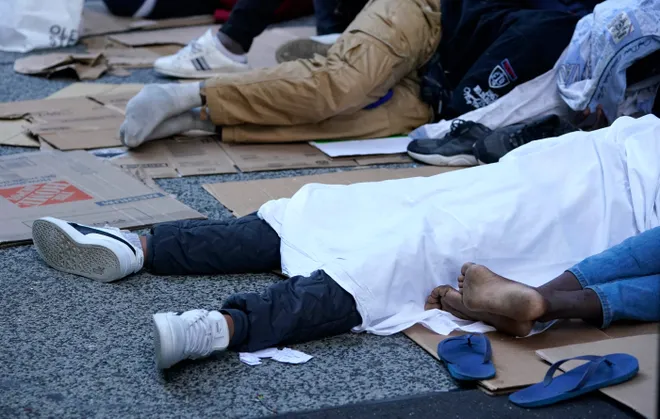
New York City is 'too full'
Nonprofit staff and housing lawyers who spoke with USA TODAY said New York City officials have also been offering plane tickets to migrants who want to leave and settle down elsewhere in the U.S.
Last month, the Adams administration said social workers are tasked with asking migrants where they want to go and what they want to do in the U.S., so that they can try to help them accomplish their goals.
Laura Sumajjan, a mom of three from Colombia, was offered a ticket to Mississippi, she told USA TODAY. But she declined to leave New York City, because she doesn't know anyone anywhere else and her kids are enrolled in school there.
Her family has not yet received a 60-day notice to leave their shelter, but she's been learning about the new policy through social media and the news.
She said social workers didn't ask her what she wanted before offering her a chance to relocate again to Mississippi. They've also floated other less-populated states, she said.
"They said New York is too full," Sumajjan, 28, said in an interview in Spanish. "They haven’t asked me, it’s where they can offer help, not where we want to be."
Sumajjan came to the U.S. a year-and-a-half ago, traversing through three Mexican cities before crossing the border near Mexicali and arriving in New York City via Ohio. She said she did it for her children, who she wanted to have an American education.
“Everyone deserves opportunities,” she said.
What is New York's right-to-shelter mandate?
For over four decades, New York City has sheltered tens of thousands of unhoused people in homeless shelters, unlike other major cities, such as Los Angeles and San Francisco.
In the 1970s, before the legal right to shelter existed, many homeless New Yorkers (mostly men) died on the streets and suffered terrible injuries, according to the Coalition for the Homeless, a legal nonprofit that has advocated for unhoused people in the city for more than 40 years.
In 1979, a lawyer named Robert Hayes, who co-founded the coalition, filed a class action lawsuit against the city and New York state, arguing the legal right to shelter existed because the state constitution declares "the aid, care and support of the needy are public concerns and shall be provided by the state."
By 1981, New York City and the state agreed to provide shelter and board to all homeless men who "met the need standard for welfare," the Coalition for the Homeless says. Over time, the mandate extended to women and families.
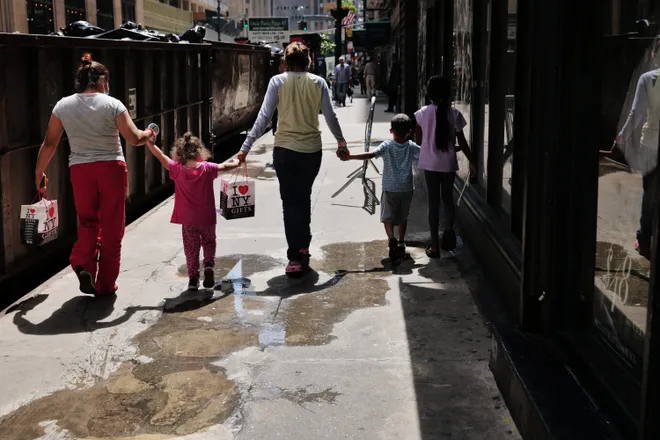
New York's homeless have long been 'hidden'
New York City, tied with Los Angeles County, has the largest unhoused population in the U.S., with more than 100,000 lacking permanent housing.
The vast majority of unhoused people in New York live in shelters, so compared to California and other western states "the problem is hidden," said Margot Kushel, director of the Benioff Homelessness and Housing Initiative of the University of California, San Francisco.
In California, more unhoused people live in tent encampments or in out-of-the-way places, along river beds or around floodplains. More people than ever are living in cars and vehicles in the Golden State, but that's not the case in New York City because of its unique lack of parking, Kushel said.
"Whatever unsheltered homelessness there will be will be very visible," Kushel said.
Encampments and people forced to sleep on sidewalks could cause problems for local restaurants and business owners, as has been the case in California, she said.
Last month, Adams said New York City will consider passing out tents to newly arrived migrants, so that they can live in parks and other outdoor spaces, the Wall Street Journal reported.
When asked to confirm, the mayor's office said "all options are on the table."
“Passing out tents as winter approaches is not only a mockery of the city’s legal and moral obligation to provide safe shelter to people without homes, but it will put lives in danger," the Coalition for the Homeless said in a statement. "People freezing to death on the streets is the exact nightmare that the right to shelter was designed to prevent."
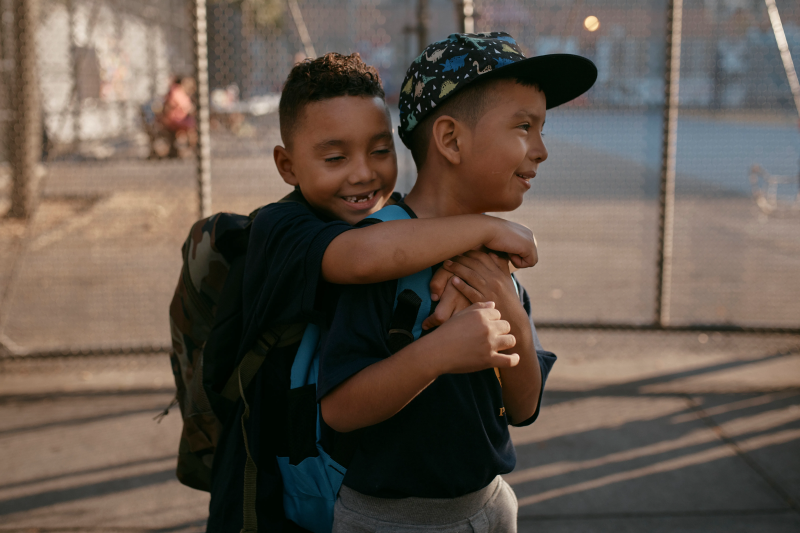
Advocates warn homeless people could die on NYC streets
The Coalition for the Homeless and the city are tied up in legal talks over the shelter stay limits for migrants, in part because the 30 and 60-day limits are so arbitrary, said Will Watts, the coalition's deputy executive director for advocacy.
The mayor's office told USA TODAY they decided on the 30 and 60-day limits because that was the amount of time they felt gave migrants a chance to plan for the next steps in their journey.
"The analogy that came to mind was, ‘this is an eviction notice,'" Watts said. "It just felt like, ‘I’m giving you a 30 or 60-day notice based on your tenancy.’”
International arrivals have been an unfortunate "scapegoat" in the city's homelessness crisis in recent years, and the mayor's decision to limit their shelter stays places the stress of the crisis squarely on their shoulders, said Murad Awawdeh, executive director for the New York Immigration Coalition.
“It’s a huge deal, it’s incredibly disingenuous for this administration to be going after the most marginalized and vulnerable members of our communities, that does not really foster New York values," he said.
Migrants with nowhere else to go face the risk of getting frostbite on their extremities and freezing to death if they have to live on the streets, said Kushel, who is a medical doctor. Unhoused people who live unsheltered are also at risk of getting hit by passing cars, especially at night, she said.
"We're heading into winter. That's not survivable," Kushel said. "Like, we don't let our houses go down to 40 at night, because it would be dangerous."
Unhoused people living outside are also at greater risk for violence and sexual assault, experts say. This year, researchers in Los Angeles found most unhoused women said feeling unsafe was their top concern while they lived on the streets.
"The data collected show that high rates of victimization and experiences of trauma are both a cause of homelessness and a common feature of women’s experiences of homelessness," says the report from the Urban Institute.
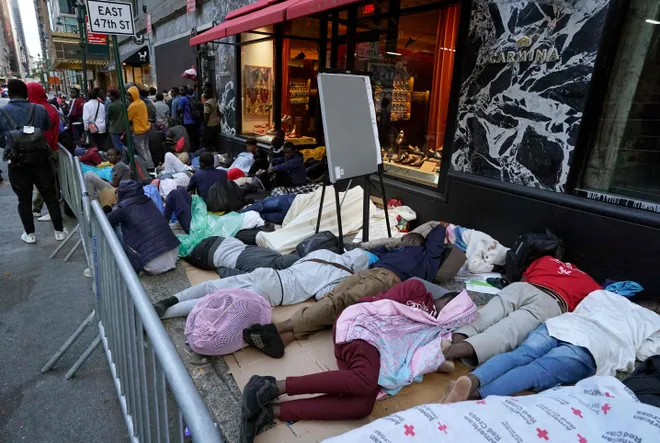
It's more costly to solve unsheltered homelessness, critics warn
Cities across the western U.S. have been struggling in recent years to solve their own unsheltered homelessness crises, with many seeking to get unhoused people into shelter in temporary hotel programs or sanctioned encampments.
The cost of trying to solve unsheltered homelessness in New York City would be monumental, City Comptroller Brad Lander told USA TODAY, and the mayor's decision to limit shelter stays for migrants is a short-sighted fiscal solution that will cost more in the long term, he said.
"It's pennywise and pound foolish," Lander said. "The costs of unsheltered homelessness ultimately show up in hospitals because sleeping on the street is terrible for your health. They show up in the corrections system because we have a program of homeless sweeps."
Like in other cities, the relatively small number of unhoused people who live outdoors in New York face routine homeless sweeps by officials, where people are moved from encampments to housing, shelter and sometimes jail.
In July, an audit conducted by Lander's office found the city's homeless sweeps "completely failed" to help unhoused people. Among over 2,300 unhoused people who were swept from New York streets in 2022, only three people secured permanent housing.
Sumajjan, from Colombia, said she tries to get money from doing odd jobs, but all her cash ends up going to food, she said, so she can't save up money for an apartment.
Meanwhile, she's waiting to possibly get a notice telling her the family has 60 days before they must leave their shelter in Queens.
If and when that notice comes, Sumajjan said, "I am going to present myself again because I have nowhere else to go."
Contributing: Melissa Montoya
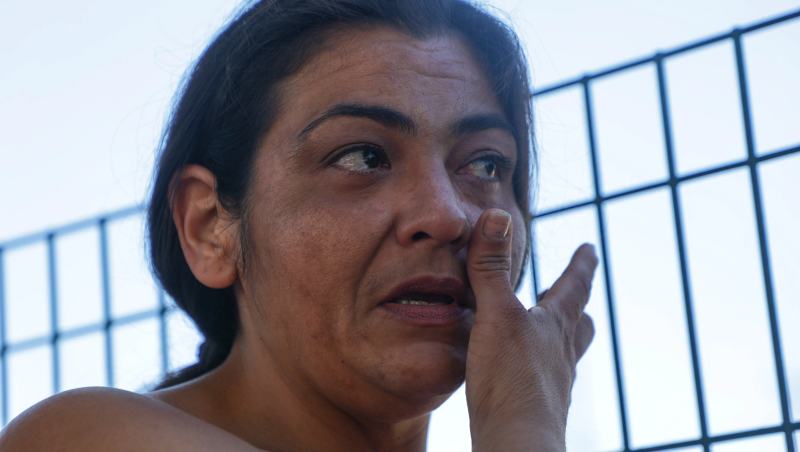
Disclaimer: The copyright of this article belongs to the original author. Reposting this article is solely for the purpose of information dissemination and does not constitute any investment advice. If there is any infringement, please contact us immediately. We will make corrections or deletions as necessary. Thank you.




